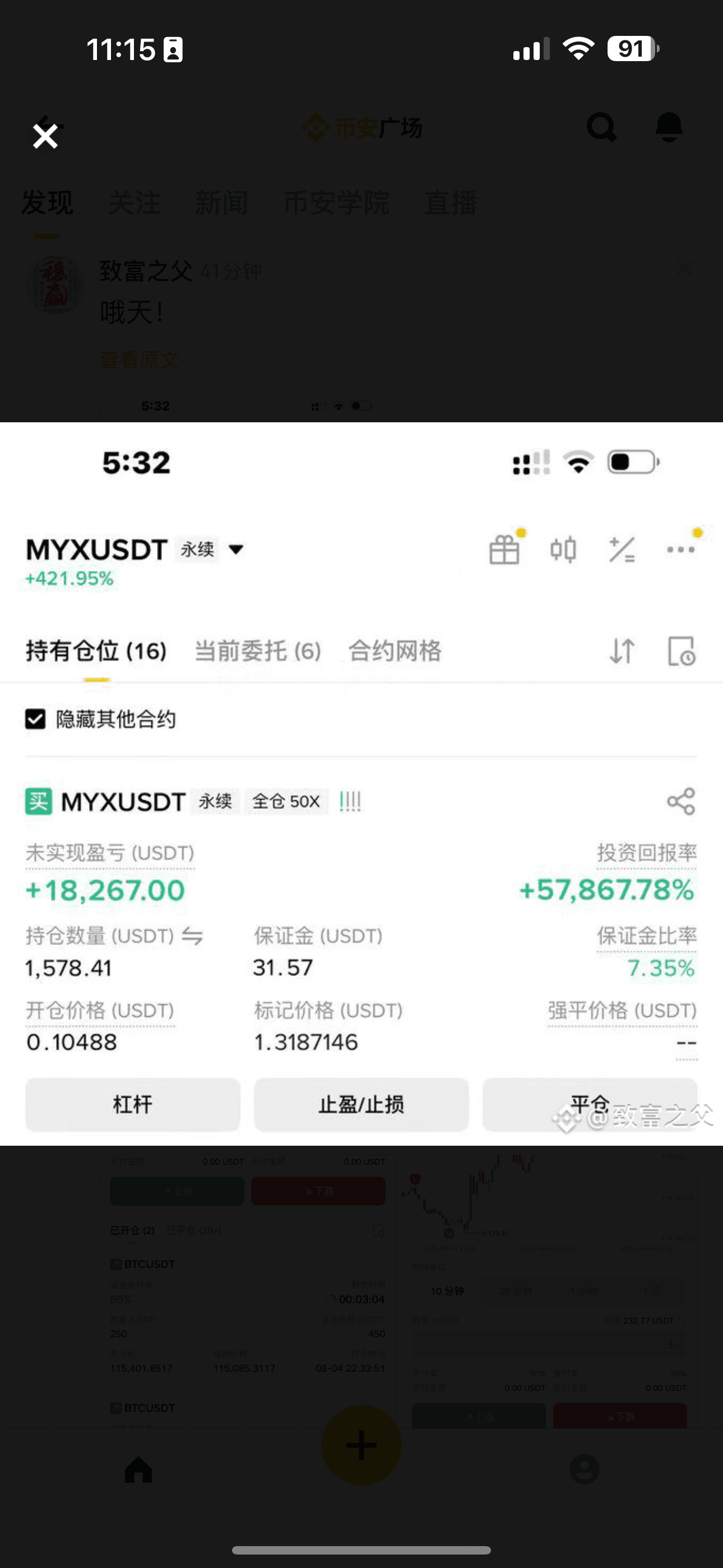
Tip 1: Treat contracts like flipping a coin—look at both sides clearly before betting
1. Underlying Logic
Going long = betting on the upside (rise), going short = betting on the downside (fall), profit comes from correct direction.
Leverage ≠ magic, it's just an amplifier: 10x leverage = swapping a 1 yuan coin for a 10 yuan dice, guess right earns 10 times, guess wrong loses 10 times.
2. Practical Details
Ask yourself 3 seconds before placing an order: ① Is the trend up or down? ② Is there any significant news interference? ③ Where is the stop loss point?
Use a 5-minute chart to find 'secondary confirmation', such as breakout + pullback, then decide whether to bet.
Tip 2: Use strategy instead of guesswork—let the system work for you
1. Grid Trading
Scenario: Choppy market, BTC fluctuating between 60k–65k for 3 days.
Setting: Every 500 U is a grid, buy low and sell high, automatically cycle every 24 hours.
Estimated profit: Fluctuation range 5%, leverage 3 times, single grid net profit margin 15%, daily profit ≈ 3%–5%.
2. Funding Fee Arbitrage
Principle: Contract funding fee > Spot holding interest → Go long on spot, go short on perpetual, lock in the interest rate difference.
Case: A certain coin's funding fee annualized at 18%, spot annualized at 2%, interest rate difference of 16%, stable income of 16,000 U from 100,000 U in a year.
3. Hedging Trading
Scenario: The night before a major event, with unknown volatility.
Operation: Open equal amounts of long and short positions simultaneously, close the losing direction after fluctuations, retain the profitable direction to achieve 'winning in both rise and fall'.
Tip 3: Treat risk control as a lifeline—learn not to lose money before talking about making money
1. Position Management
Pyramid Position Increase: Initial position 1%, increase 0.5% after 2% profit, maximum not exceeding 3%.
Reverse Pyramid Reduction: Reduce by 1% for a 1% loss, reduce by 2% for a 2% loss, to prevent liquidation.
2. Stop Loss Discipline
Fixed Stop Loss: Set a 2%–3% stop loss upon opening, price triggers automatic liquidation.
Trailing Stop: After a 5% profit, move the stop loss up to the cost price to lock in profits.
3. Emotional Management
If 3 consecutive orders lose → Mandatory 24-hour break to avoid 'revenge trading'.
Establish an 'Emotional Diary': Record the reasons for each position, profit and loss, mood, and use data to correct impulses.
4. Funds and Life
Living Expenses Isolation: At least leave enough for 12 months of daily expenses to ensure that liquidation does not affect your meals.
Indicator Assistance: MACD/KDJ is for reference only, the core is still trend + volume + news.
Conclusion
Contracts are not a casino, but a marathon of cognition and discipline.
First use 1% of funds to run 100 orders on a simulation account, then enter the real market;
First write 'not losing money' into muscle memory, then write 'making money' into account balance.
Continuously monitor CFX ENA ETH SOL XRP